Menu
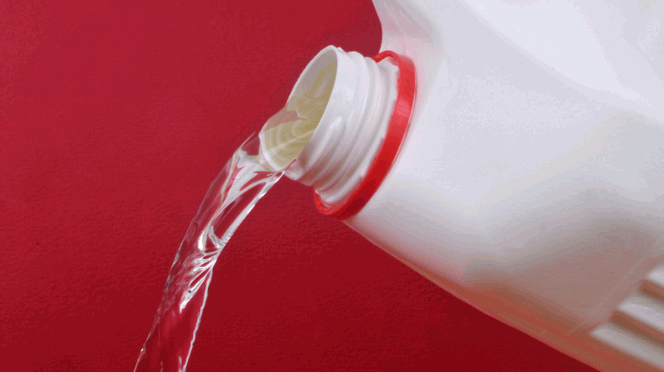
Nowadays, homeowners are becoming more aware of the work they can do to keep their home's exterior in tip-top shape.
As exterior surfaces become dirty with mould, mildew, algae and moss over time, it's easy to see why people are looking for tips online about how to tackle it themselves. Surely it's not a big job, right? Check out our guide on how to clean mould off render.
And after just a little research you will no doubt come across a suggestion to use a bleach solution whilst pressure washing or using regular bleach mixed with water in a large bucket applied to your walls with a sponge, before washing it away with your garden hose.
But is this really something you should be doing?
Well, let's find out together below, shall we?
If you want to remove mildew, mould, and dirt from the side of your house, then bleach might not actually be such a bad idea.
You see, bleach is an example of harsh chemicals that are great at A) cleaning regular dirty messes and B) killing organic growth like algae, mildew, mould, and fungi.
Otherwise known as sodium hypochlorite, bleach can be used in a solution to help with rinsing your exterior walls. They will be clean by the end of it if done right.
The problem most people have, though, is that they do it wrong.
They blast their houses with a pressure washer that's set to too high a setting, and use a solution so strong that it could not only remove the stains from the surface of the walls, but potentially damage the wall and render whilst they're at it.
But don't worry, we'll do our best to help you avoid that below.
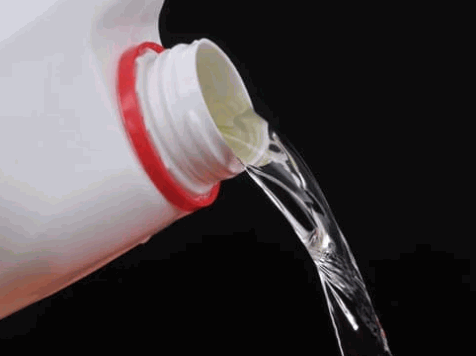
There are two options here if you're thinking of cleaning the outside of your house yourself:
Now, using a pressure washer might sound like fun, but trust us, it is the most difficult method of the two. If you're experienced, then maybe you will be able to handle the pressure washer technique, but you'll need to follow our advice below.
If you're not as confident or you simply don't want to take any risks, then we'll also explain the alternative method, too.
If you're pressure washing, then you will need to create a mix of warm water and bleach to see results.
Before you start, we'd always recommend going over the wall with a scrub brush first. A scrub brush will loosen any dirt or stubborn stains before you apply the bleach solution, and really that's the secret to an amazing job well done.
Once you've mixed the bleach, you should try the pressure washer on just one spot of your house. Leave it for at least a couple of hours first. This will tell you two things:
Once you know you've got it right, then you can pressure wash your house to clean it. Just be careful of the spray whilst you work. You only want to spray affected areas - if your roof is fine, avoid it. And do your best not to spray your windows either - the streaks it leaves behind will just leave you with another cleaning job!
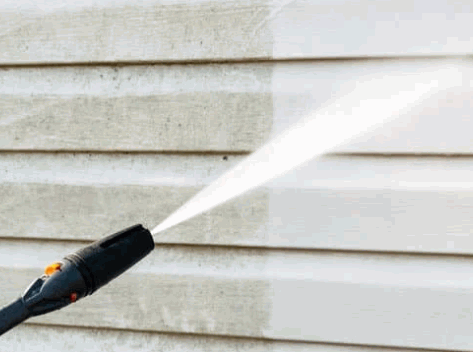
An alternative method is simply mixing together one cup of bleach per gallon of warm water to create a soapy water mix. Apply this to your house exterior using a sponge, and then quickly rinse using a garden hose.
The trick here is not allowing your bleach to sit on the surfaces of your exterior for too long. If you do, it could be damaging to your house and your local environment.
The best advice we can give you here is to work in stages, tackling stains in one area before rinsing and moving on.
Better yet, try to clean your house exterior in a team. One person applying the bleach and scrubbing the mould, mildew, and dirt, and the other can clean with the hose behind as they go.
Note: if you're dealing with any stubborn stains you can use a scrub brush to try to dislodge it, or else mix a separate cleaning solution of white vinegar, warm water, and baking soda. Vinegar is great for breaking down tough messes, and the baking soda will act as an abrasive agent to help scrub away those messes. White wine vinegar has been used in cleaning solutions for years - and yes, it really works on your house's exterior too. Check out our article about cleaning render with white vinegar.
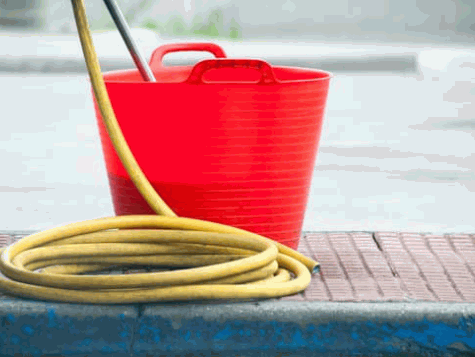
Before you jump into either method, though, you'll want to think carefully about the liquid bleach cleaner you're picking out. Because not many people realise there are two types:
And which one you choose to wash your house exterior with could be important.
Chlorine bleach is simply regular bleach - it's the stuff you find in household cleaners throughout the world. It's a strong cleaner, but it's also a pretty huge threat to plants in your flowerbed.
Oxygen bleach, also known as colour-safe bleach, is much more suited to cleaning any outdoor surface. Check the manufacturer's instructions on the back of any bottle to make sure you're picking up oxygen, not chlorine.
One cup of oxygen bleach per gallon of warm water is a great solution for use on vinyl siding, stone, and brick, for example. You can also try oxygen bleach with wood siding, but we'd advise testing it out on an inconspicuous area first. Different types of wood may react differently, and you don't want to cause damage - a weaker solution of half a cup of bleach may be best here.
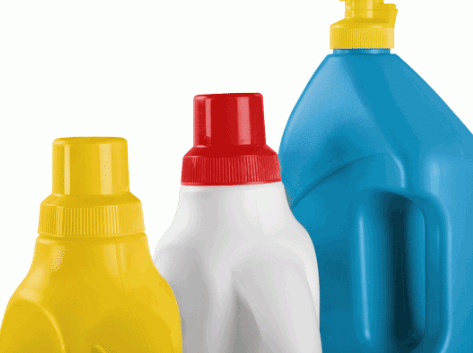
The following warnings and tips apply to both methods we've discussed today, so listen up:
It is so easy to kill plants when you wash your house exterior. You only want to clean your brick wall, vinyl siding, or render- harming the environment shouldn't come as a consequence of cleaning up your house.
So, be mindful of what's around you. Don't spray your solution near flowers and plants and be realistic about where your bleach might end up. If you're working near your garden, then placing plastic sheeting down over plants to prevent them from being affected is vital.
Eye protection is obviously a must when you wash your house to avoid issues, but think about your clothes too. Overalls will help here and they'll stop you from damaging your favourite pair of jeans as you're cleaning.
Oh, and gloves. Always wear gloves. When you dip your hand in the bleach bucket, you MUST be protected.
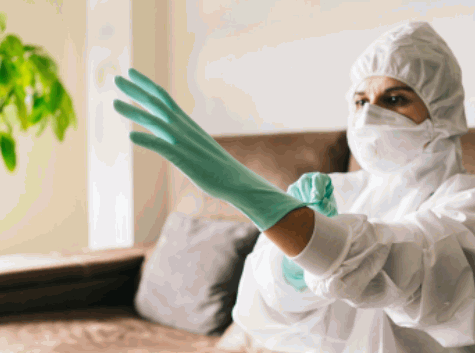
One cup of oxygen bleach per gallon of water is a safe bet to start with. But you should test a small area first. It may be too strong or too weak, so adjustments may be necessary. Do this before you wash your house entirely, because when you come to rinse it, you might notice serious fading issues.
If you are pressure washing, then start on the very lowest setting - fan. You might be able to work up, but the last thing you want to do is damage your siding, walls, render, or roof because of an overzealous pressure washer.
After cleaning your roof, siding and walls - rinse. It's vital that you clean away the harsh chemicals you've just been using, because leaving it to sit on the surface for too long won't make your house any more clean, but it might cause damage to your exterior.
Think about what you're working with and be sensible. Wood will need to be treated differently to vinyl, stone different to brick, and don't even get us started on the different types of render - that's a minefield all of its own. Oh, and painted surfaces. The last thing you want to do whilst cleaning is wash away your favourite paint. We offer brick paint removal as a service.
But do your research, be sensible, and if you're not sure, just don't clean it yourself. There are professionals out there who can do it for you...
Speaking of a professional team of cleaners that can help you clean your house exterior - hi! We're Wash Your Walls.
We're joking, of course, we're not trying to hard sell you on anything today. If you're a competent DIY enthusiast who knows their house exterior well, then cleaning it will be a breeze. And you should go for it if you have confidence and take the necessary precautions to protect yourself, your home, and the environment.
But if you're not sure, then why not contact a professional team like ours? We can take care of the cleaning for you and pick the right method to see the best results thanks to our years of experience working with different house exteriors!
Believe it or not, mixing your homemade solution can be just as effective as using one of the alternative methods below. But be cautious.
Mix together a solution sensibly - you don't want to remove paint from painted surfaces or accidentally cause fading to a coloured render. If you're cautious, though, a homemade mixture can certainly do the trick.
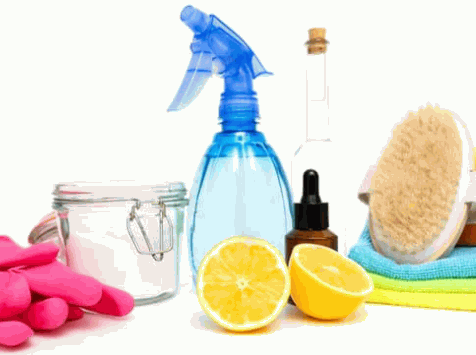
If doing it yourself doesn't sound like something you would like to do, then you could always try hiring professionals. They can use different methods to help:
And others carry out the work for you to deliver impressive results.
If you feel confident and don't mind getting your overalls wet, then dust yourself off and jump in. You can absolutely do this work yourself - if you're cautious, sensible, and have confidence in your DIY abilities.
And if not? Well, just contact a business like Wash Your Walls and we'll take care of the exterior wall cleaning for you. It's as easy as that!
© Copyright 2024 www.washyourwalls.uk